Healing Scents: Plant an Aromatic Garden
Scents – both good and bad – have a powerful impact on how we feel. In fact, brain studies show our sense of smell is closely linked to our
brain’s emotion centers. Humans have used plant volatiles, the aromatic parts of plants, for thousands of years to improve their well-being.
And modern scientific studies suggest certain plant volatiles have predictable and beneficial effects on us.
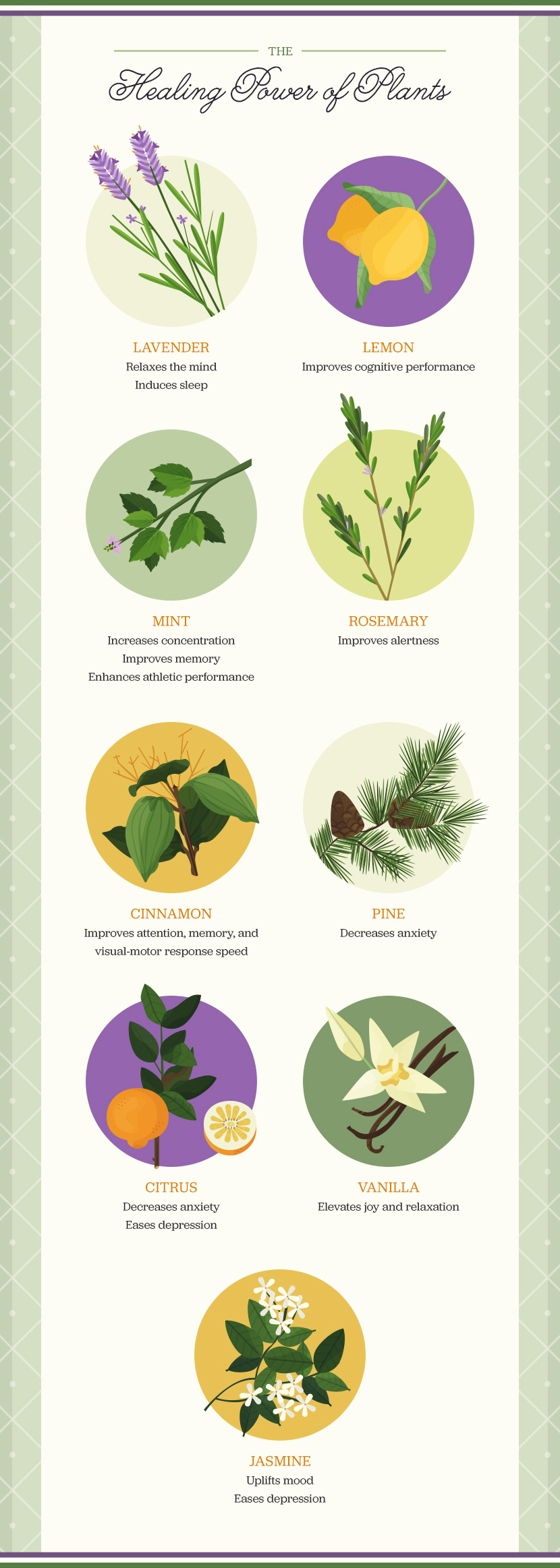
Stop and Smell the Roses: The Price of Essential Oils
Essential oils are not actually oils. They are the highly concentrated plant constituents made by distilling large quantities of whole plants
with water, steam, solvents, or mechanical methods. People have used these oils for thousands of years. Recently they have boomed into a
$24 billion industry.http://pubs.acs.org/doi/abs/10.1021/bk-2013-1127.ch018
Despite their many healing powers, the everyday use of essential oils has some downsides. First, the manufacturing of essential oils
raises significant sustainability concerns: It takes large amounts of plant material to distill the
oils.http://herbalacademyofne.com/2015/04/define-sustainability-lessons-for-essential-oil-consumers In some cases, thousands of pounds of plants are
used to produce a very small amount of oil. Most plants for essential oils are either over-harvested from the wild or grown overseas in large monocrop farms.
They are sometimes ripped entirely
out of the ground for distillation.http://mountainroseblog.com/choose-australian-sandalwood-essential-oil/http:/mountainroseblog.com/choose-australian-sandalwood-essential-oil/
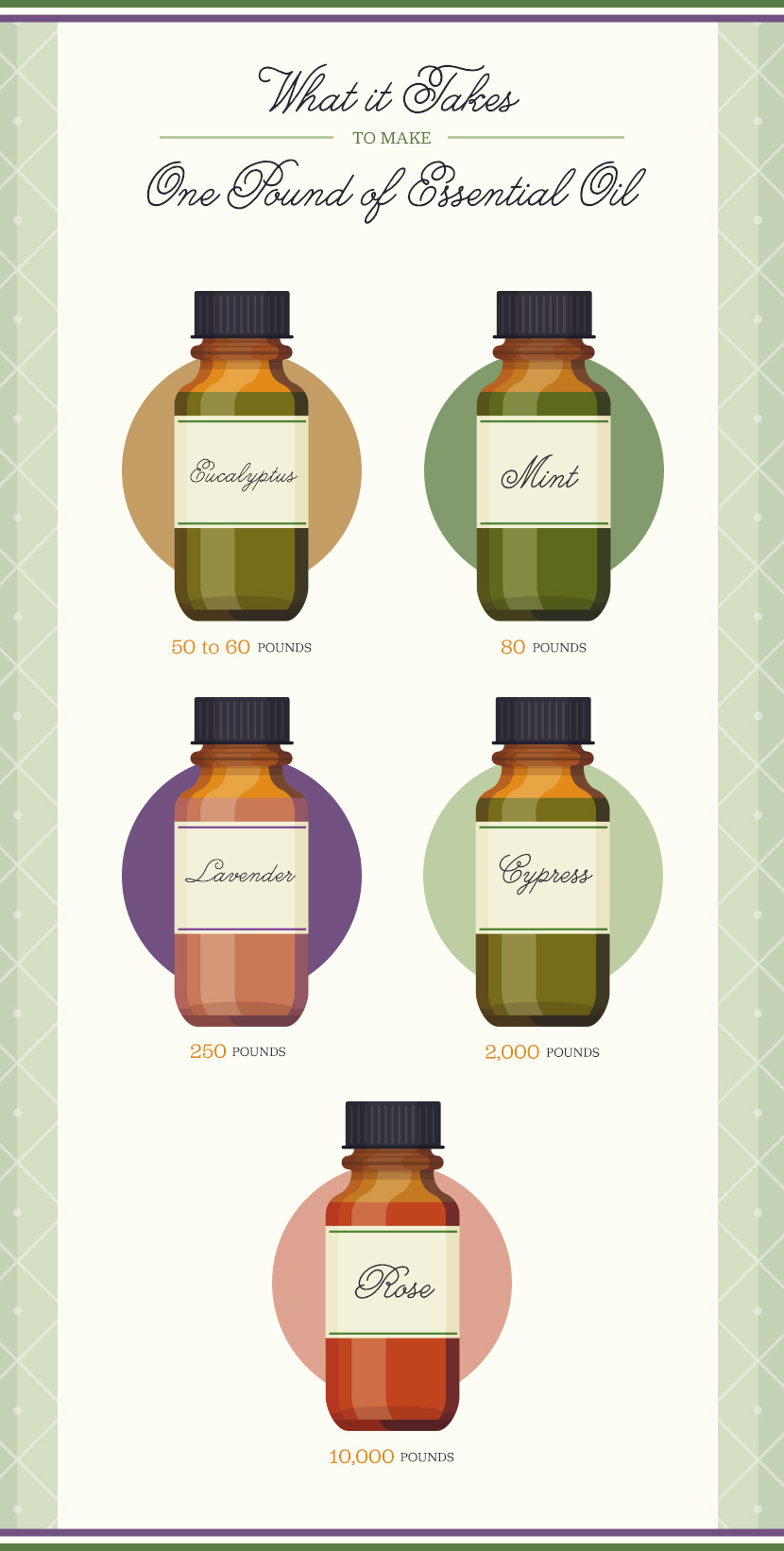
Essential oils are considered cosmetics and thus unregulated by the FDA. As a result, information
about the manufacturing process is hard to find. But some herbalists and an independent watchdog group named
Cropwatch have raised concerns that the essential oil trade may endanger threatened wild plant species.
Wild species threatened by the essential oil trade include:
Beyond sustainability issues, essential oils are potent substances that should be used with caution.
Think of it this way: Just one drop of peppermint oil reportedly equals 26 cups of peppermint tea. For that reason, essential oils
should be diluted and used in very small doses. Many experts warn against
internal use, except under the guidance of a trusted health practitioner.
Inhaling some essential oils may be dangerous for pregnant and nursing women, individuals with epilepsy, children, and pets.http://naturopathicpediatrics.com/2014/09/08/essential-oil-safety-danger-essential-oils-seizures-children/ Some oils, including tea tree,
should be treated as hazardous if spilled. (Manufacturers can supply a material safety data sheet outlining safe ways to dispose of spilled oil.) Moreover,
essential oils can be expensive. Depending on the oil, one half ounce can cost more than $75.
The good news is there’s an inexpensive, safe, sustainable, fun way to use scents for healing: Grow your own, easy-to-cultivate aromatic herbs. Many herbs are perennials
and delight gardeners with aromas year after year. Whether in an outdoor garden or indoor container, your healing scents will always be at your disposal. You can bring cuttings
into the bedroom to encourage relaxation and into the office to improve concentration. Or dry the herbs and turn them into delicious-smelling pillows, teas, baths, infused oils,
and balms. As a bonus, aromatic herbs have multiple uses and can zest up kitchen recipes.
First things first – you have to plant the herbs before you can reap the benefits.
How to Plant a Fragrant Healing Garden
The following five aromatic herbs allow you to explore the healing power of plant volatiles. They’re easy to grow and offer a range of healing benefits.
Lavender
Lavender is a perennial bush that comes in many beautiful varieties, including English and Spanish.
Scent benefits: The smell has been shown to relax the mind and induce sleep.http://www.ncbi.nlm.nih.gov/pubmed/16520572
Planting directions: Grow all varieties in full sun and well-drained, fertilized soil. Let the soil dry out for 7 to 10 days
between waterings. Prune in the early spring or at harvest time. Harvest just as blossoms show color.
Additional uses:Herbalists use lavender to treat headaches and anxiety. Use it to flavor sugar, syrups, sweet treats, and savory dishes.
Mint
Mint comes in many different varieties including sweet mint, spearmint, peppermint, and chocolate mint.
Scent benefits: The smell has been shown to increase concentration, improve memory, and enhance athletic performance.http://www.wju.edu/about/adm_news_story.asp?iNewsID=1106&strBack=%2Fabout%2Fadm_news_archive.asp
Planting directions: All varieties are vigorous and generous. They grow quickly and can become invasive. Contain them to control their spread. Mint likes damp soil.
Mulch plants and feed with a little fertilizer every few weeks. Leaves can be harvested at any time. Cut the plant all the way back a few times each season.
Additional uses:
Herbalists use mint to treat stomachaches and headaches. It is a staple in numerous beverages, sweet treats, and dishes.
Lemon Balm
Lemon balm grows in 12- to 18-foot high bushes.
Scent benefits: Lemon balm’s pleasant scent has been shown to improve cognitive performance.http://www.ncbi.nlm.nih.gov/pubmed/12888775
Planting directions: Lemon balm thrives in partial sun and shade in most climates and in all types of soil. It tolerates drought well. The plant can become invasive.
Contain it to control its spread. Harvest the leaves in late spring, summer, and fall.
Additional uses: Taken internally, the herb is calming. It is used by herbalists to treat a number of conditions, including anxiety and insomnia. It can replace lemon or lemon peel
in savory dishes and baked goods.
Rosemary
In the right conditions, rosemary grows into large woody bushes.
Scent benefits: It has been shown to improve alertness and cognitive performance.http://www.eurekalert.org/pub_releases/2012-02/sp-crs022012.php
Planting directions: In warmer climates (USDA Hardiness Zones 7 and up), rosemary grows outdoors year-round. Plant in full sun, allow good drainage, and water infrequently.
In climates where winter temperatures stay below freezing for lengthy periods, bring the plant indoors from before the first freeze until the last frost.
Additional uses: Herbalists use rosemary to treat headaches. A small amount can flavor an entire meat, fish, or vegetable dish.
Thyme
With more than 300 varieties, thyme is a beautiful, aromatic family of plants that can dress up a garden, patio, or window box.
Some thyme varieties smell and taste like other plants, including lemon, lime, mint, caraway, or oregano.
Scent benefits: The scent of common thyme has been shown to uplift moods.http://articles.mercola.com/herbal-oils/thyme-oil.aspx
Planting directions: Plant in full sun and well-drained soil. Allow thyme to dry out between waterings. Harvest leaves before or after the flowers bloom.
Additional uses: Herbalists use thyme to treat respiratory conditions. It is a staple in stuffings and stews.
There are countless other easy-to-grow, fragrant herbs to add to the garden, including:
- Sage
- Basil
- Yarrow
- Verbena
- Rose
- Catnip
- Hops
- Marjoram
- Chamomile
How to Use Aromatic Herbs for Healing
Drying herbs preserves them so they can be used all year.
To dry herbs:
- Harvest them in mid-morning after the dew has evaporated. Do not water plants before or wash them after harvesting.
- Gather five or six stems together in a bunch, tie with a long piece of twine, and hang upside down in a warm, dry location for several days.
- When the herbs are crispy, put them in paper bags and store in a cool, dry location.
- Volatile herbs last about six months in optimal storage conditions.
Herbs can be used fresh or dried in a number of ways. Here are five simple recipes to enjoy the plants’ healing scents.http://www.herbshealing.com/herbal_ezine/April07/wisewoman.htm
Herbal Tea
Take advantage of an herb’s medicinal qualities and benefit from its aromatic scent by brewing a simple tea.
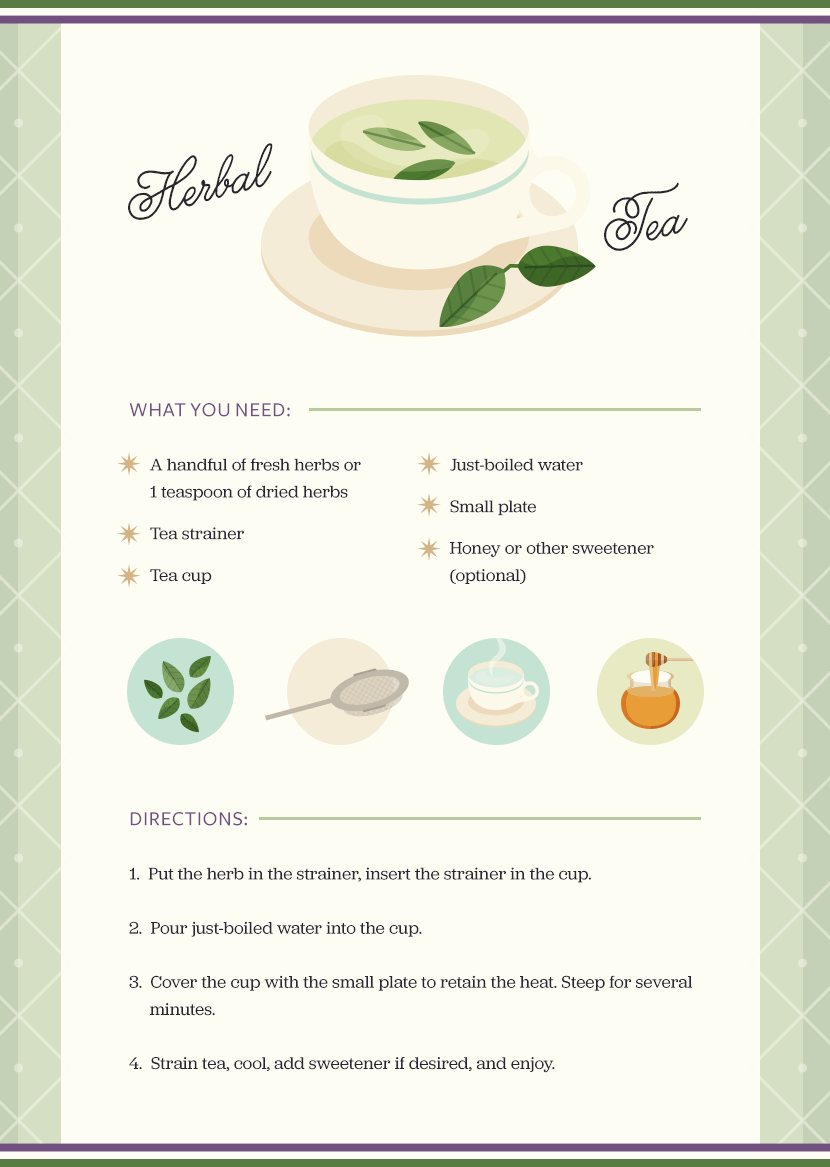
Dream Pillow
Bring the relaxing power of herbs to bed with a homemade herbal pillow.
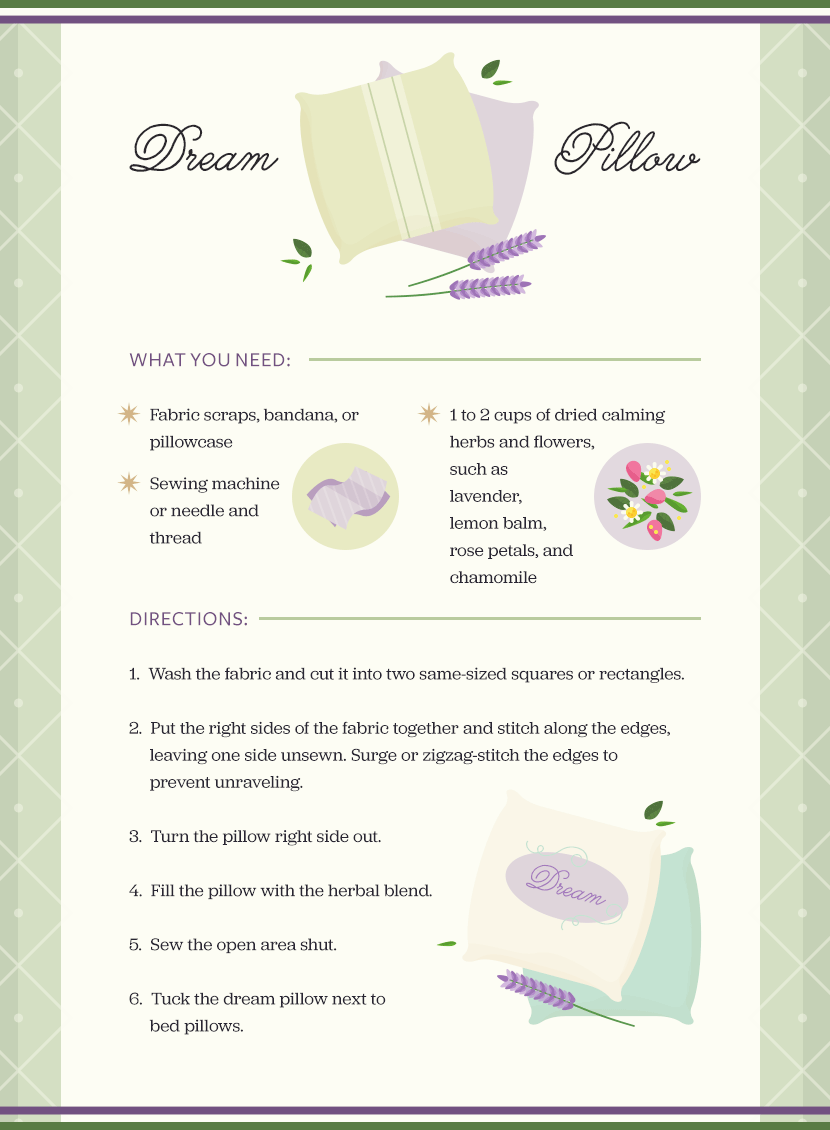
Aromatic Bath
Transform bath time into a healing experience by adding herbal tea.
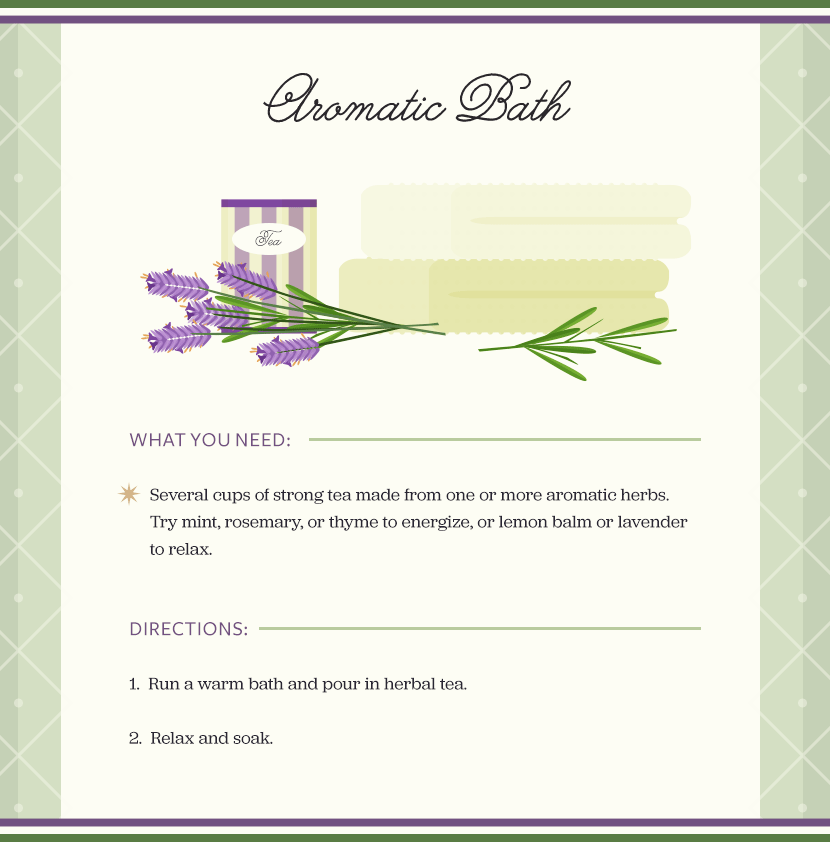
Infused Oil
Not to be confused with an essential oil, an infused oil is made by steeping herbs in a carrier oil,
such as olive or almond oil. Infused oils are much less potent than essential oils, which makes them safer.
They do not need to be diluted and can be used as lotions, moisturizers, and makeup removers; eaten as dressings; or made into healing balms and salves.
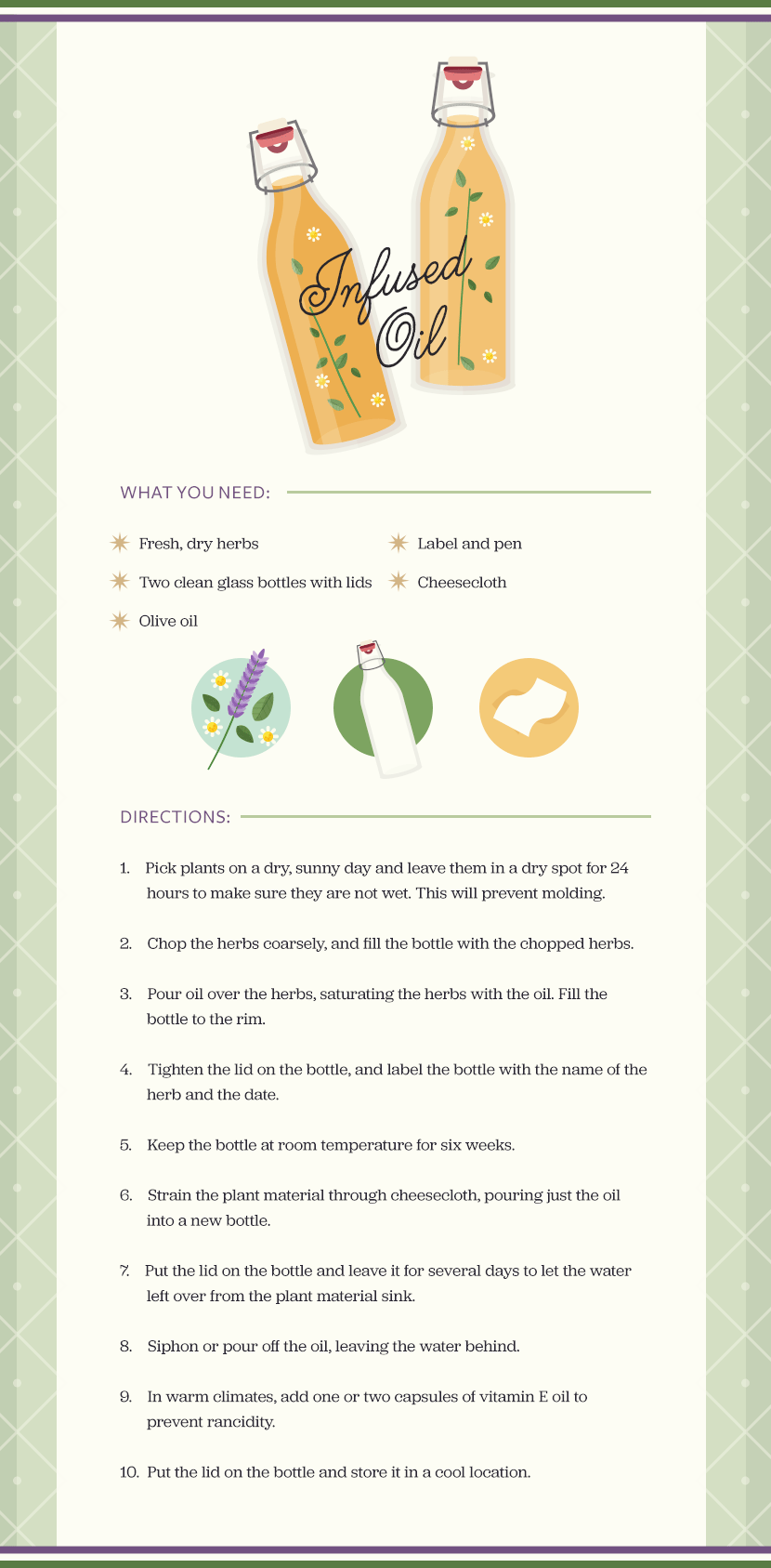
Beneficial Balm
Beeswax turns an infused oil into a healing balm that can be rubbed into the skin to moisturize, heal, and give an aromatic boost.
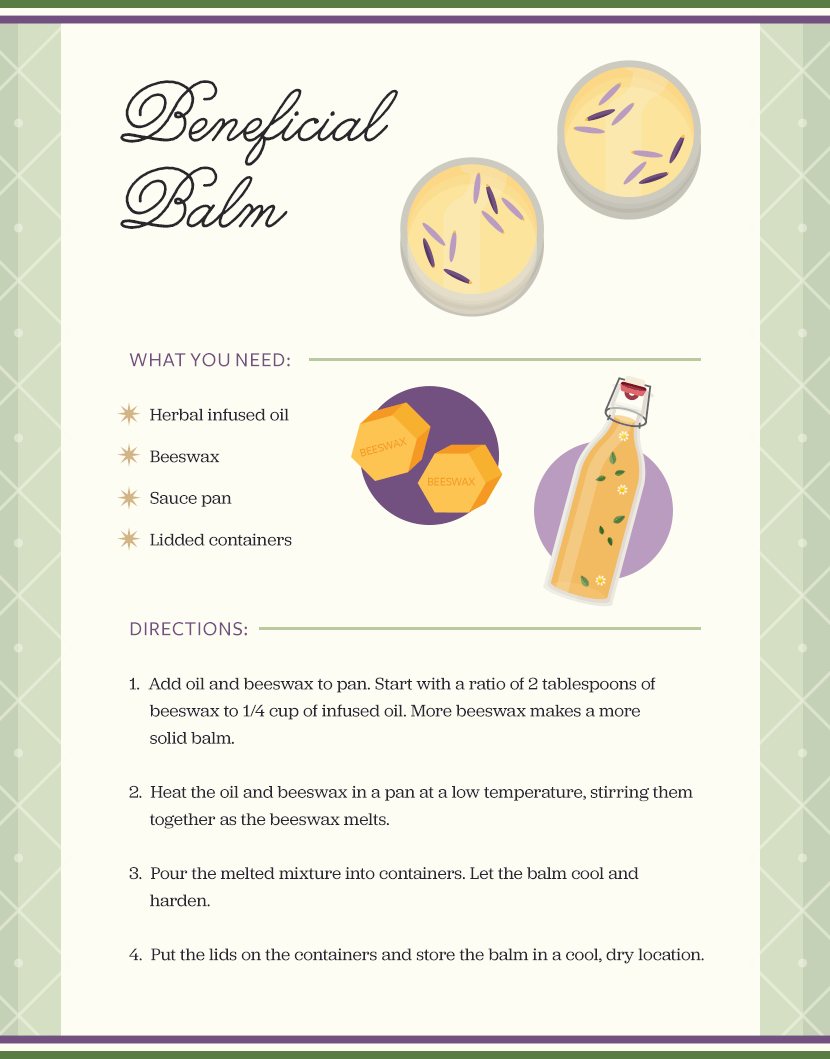
For everyday well-being, a fragrant herb garden can’t be beaten. Harvest, dry, and use herbs to make teas, baths, oils, and balms.
This is an inexpensive, safe, effective, and fun way to connect with plants and explore the healing power of scent.
Embed the article on your site

